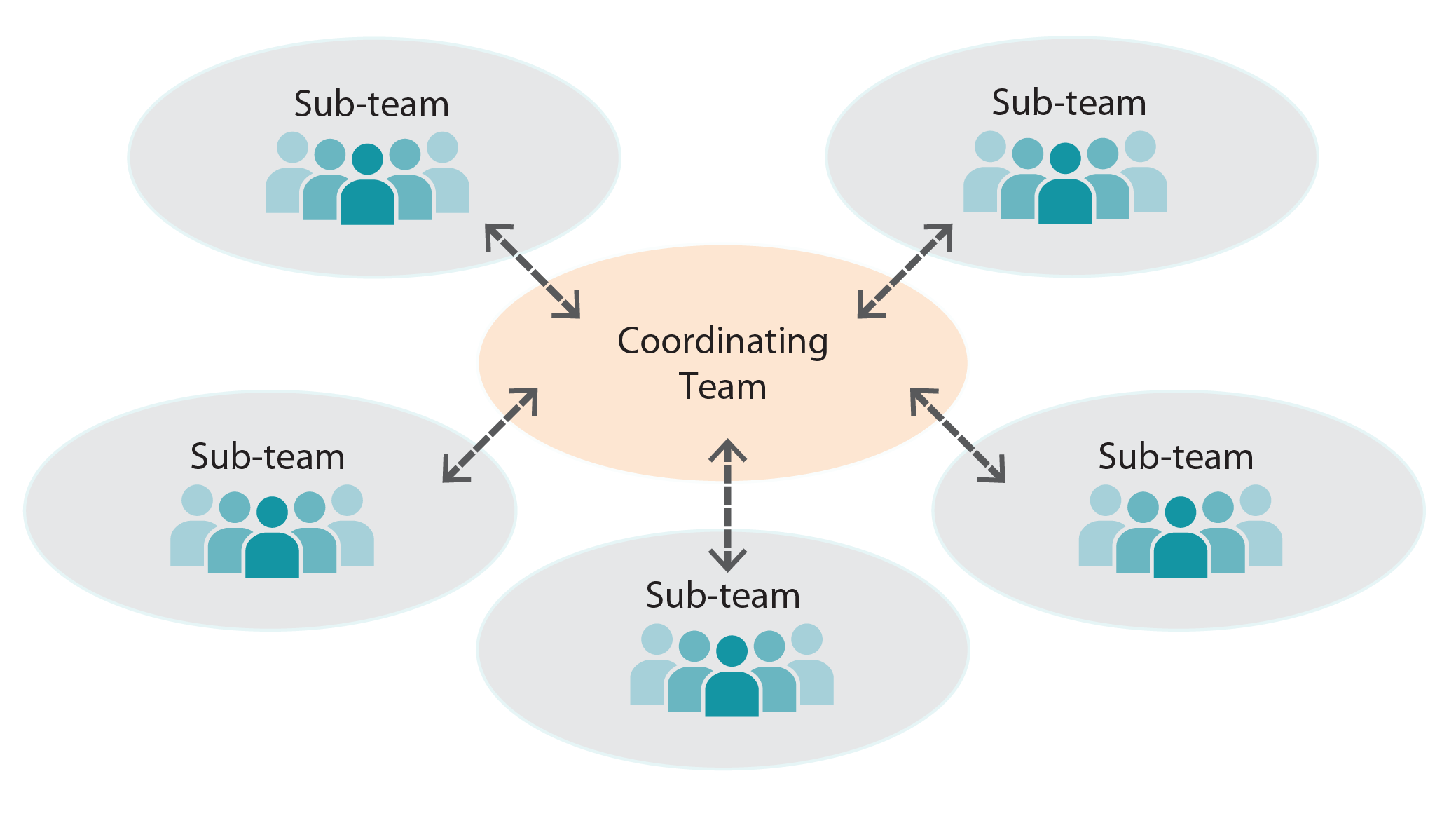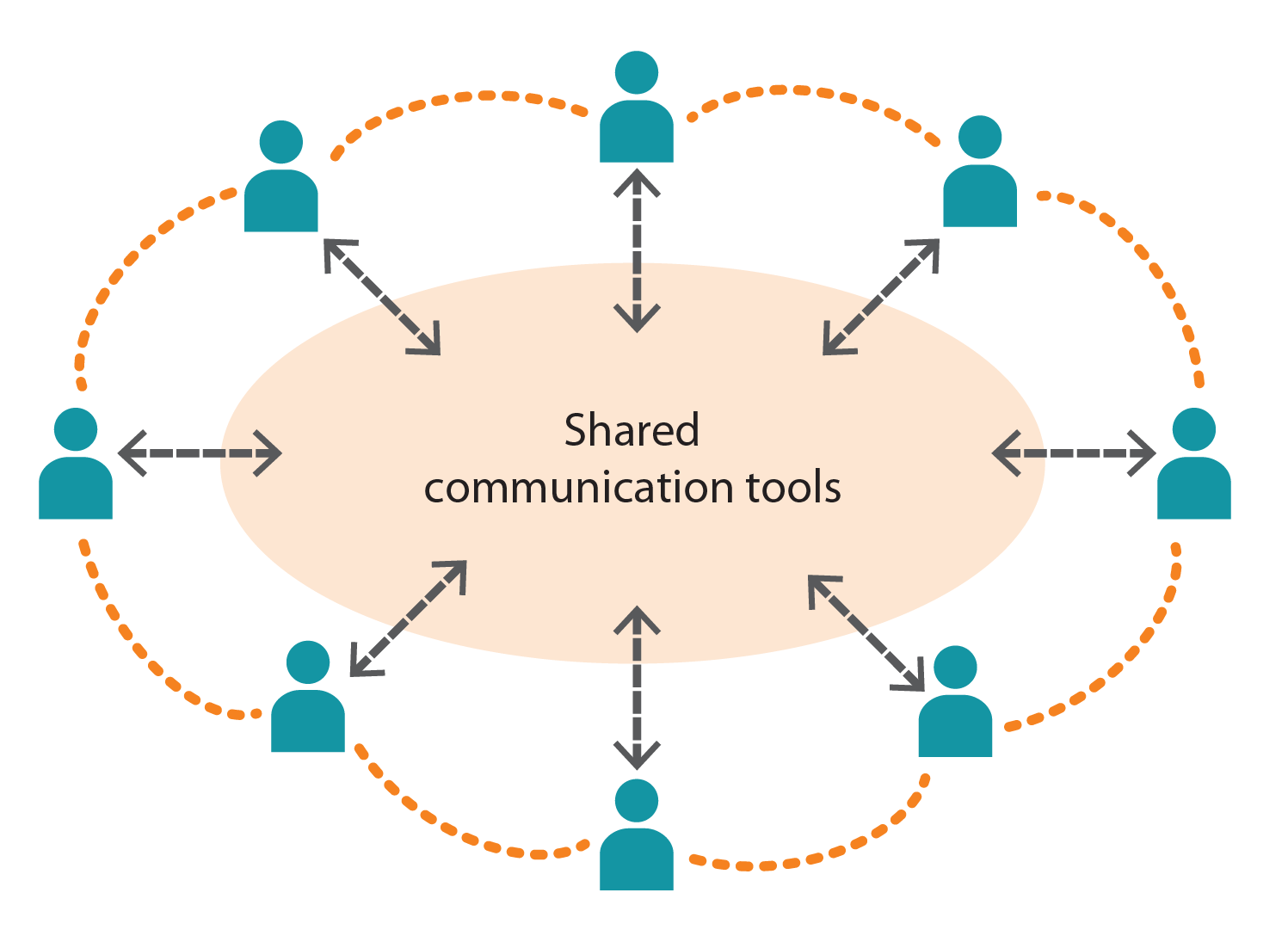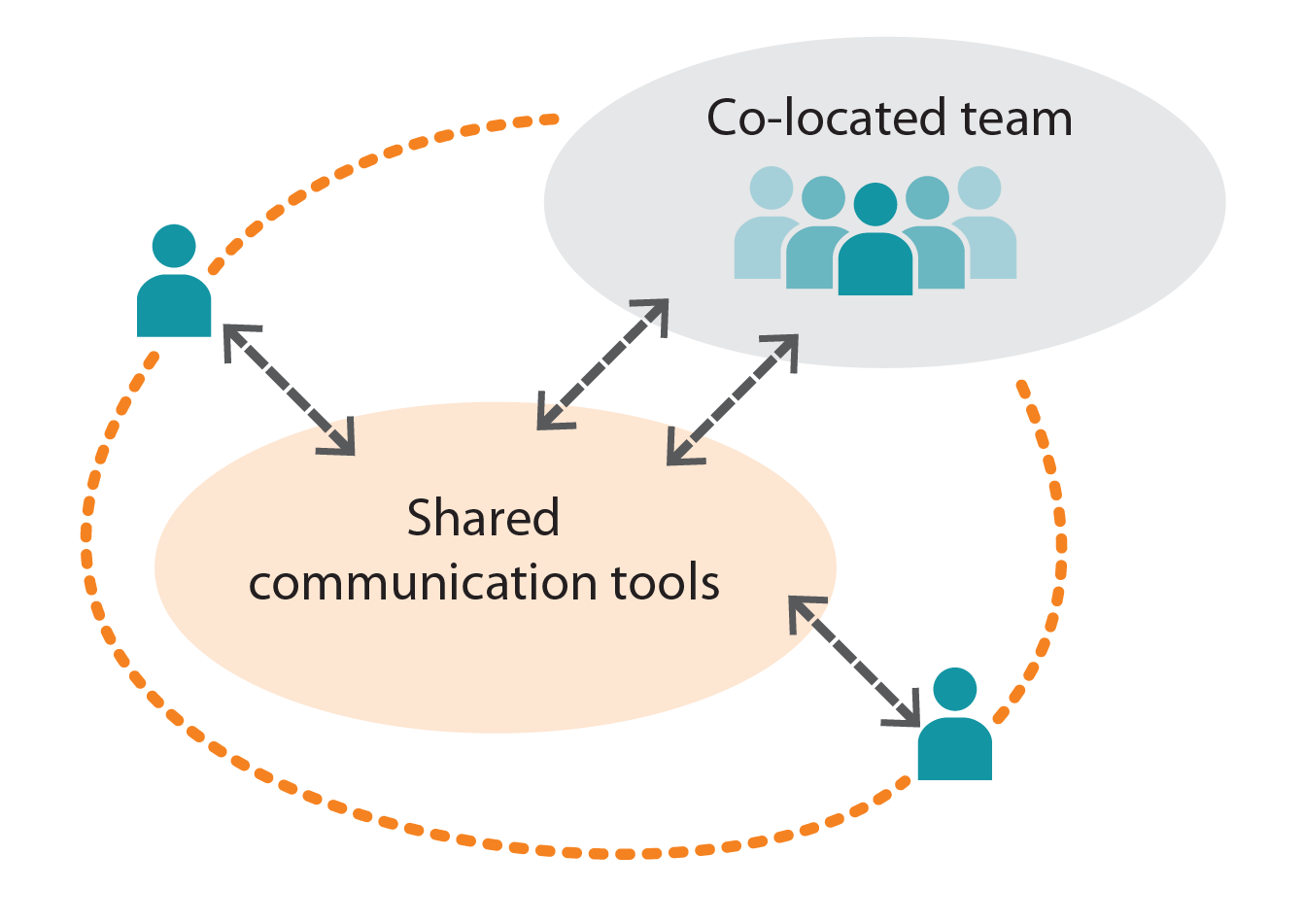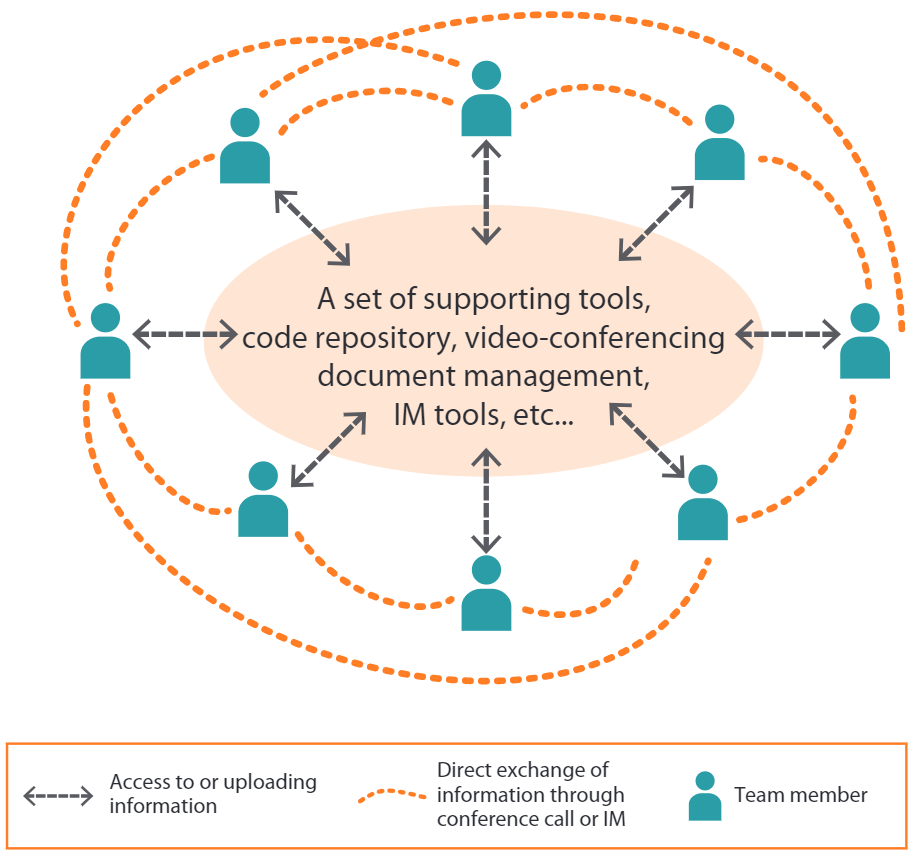Introduction
Remote working has been a feature for a while now and it’s likely to become even more prevalent due to the need to tap into specialist skills, the availability of better tools, the need for cost savings, and people’s preference for home working.
There are three types of remote working:
1. Distributed Teams
These are made up of a series of sub-teams that are located in different places. This arrangement is commonly used for offshoring and global software development.

2. Dispersed Teams
This is where each person works on their own, in a different place – as was the case during the COVID-related lockdowns.

2. Hybrid Teams
This is where most people are co-located in the same office, while others work on their own from home or another office.

The challenges of remote working
1. Getting Started
New and inexperienced teams can struggle to get this right – often not knowing what needs to be communicated and how to collaborate with people they don’t know.
Another factor is a lack of trust stemming from weak or non-existent personal relationships. This is a particular problem for remote workers in hybrid teams who might be seen as outsiders by members of the co-located team.
2. Keeping everyone on board
Dispersed teams can be difficult to manage because of a lack of visibility to people’s work and progress. Ensuring that they all get the ‘big picture’ and know what they are supposed to be doing can also be a challenge.
3. Knowledge sharing
This is more difficult with remote working and leads to the need to formalise the capturing and surfacing of knowledge.
4. Tools, tools and more tools
Although tools are essential for remote working, there’s a danger they add to the problem if the wrong ones are chosen. Communication and collaboration may also become disjointed if several tools are used for the same purpose.
5. Cultural and time differences
Differences in working practices are common with geographically dispersed teams. And having a limited overlap in working hours can further impede collaboration.
6. Large Meetings
Remote workers in hybrid teams often struggle to participate in large meetings, with difficulties hearing what’s being discussed and having their opinions heard.
Possible Solutions
- Laying down the ‘ground rules’ for remote working: doing the hours, being available, helping and respecting others.
- Taking steps to encourage and reward knowledge sharing by all.
- Limiting the size of dispersed teams to make them more manageable.
- Decentralising decision-making.
- Considering shorter iterations and sprints to retain the focus and energy of the team.
- Spreading the work so that people don’t have too much or too little to do.
- Scheduling around national and religious holidays.
- Synchronising working hours for geographically dispersed teams.
- Ensuring that people understand the project’s purpose, their roles and responsibilities, and what’s expected of them in the current iteration and sprint.
- Using the most appropriate tools for:
- Task and ticket tracking, e.g. Jira
- Team meetings, e.g. Teams, Zoom, Webex or Google Meet
- Messaging, e.g. Skype, Teams, Zoom or WhatsApp
- Emailing, e.g. Outlook or Gmail
- Knowledge sharing, e.g. Confluence or SharePoint
- Team boards, e.g. Mural or Miro
- Polling, e.g. Mentimeter, Coda or Slido
- Code collaboration and source control, e.g. Bitbucket or GitHub.

- The tools must be intuitive and easy to use (with minimal training), and they should be set up and tested well in advance of their use. And people must be made aware of which tool to use for a particular function to avoid dispersal across multiple channels.
- Getting everyone to participate in daily stand-ups, sprint planning sessions and retrospectives.
- Adjusting working practices based on the findings of the retrospectives, while avoiding changes that might disadvantage some remote workers.
- Creating documentation whenever necessary, but in just enough detail to suit the needs of its target audience.
- Using team-building exercises at the start of the project.
- Adopting pair programming and testing to facilitate knowledge sharing and trust.
Further reference:
- Remote Working Pocketbook, Agile Business Consortium
- White Paper: Remote Working in an Agile Team, Agile Research Network
Author

Agile Business Consortium
The Agile Business Consortium is the professional body for business agility. We’re all about community – whether you’re a multinational working through a large-scale transformation, a new start-up, or a contractor, we can support you to achieve more, to grow more, and to build your business agility. As a global not-for-profit organisation that’s been around for over 25 years, our knowledge and experience around agile competencies and behaviours can offer you the guidance you need to reach your agility goals. Together with our partners, we create and share agile research, case studies, resources and tools that help you compete in today’s uncertain world. A registered not-for-profit, we’re the world’s longest-standing agile-orientated organisation. We’re the brains behind AgilePM®, AgileBA®, AgilePgM®, AgilePfM™ and AgileDS™. Based in the UK, we have members in over 30 countries around the world.
Email: [email protected]
- Twitter:
- @Agile_Biz
- Website:
- www.agilebusiness.org
- LinkedIn:
- https://linkedin.com/company/agile-business-consortium



